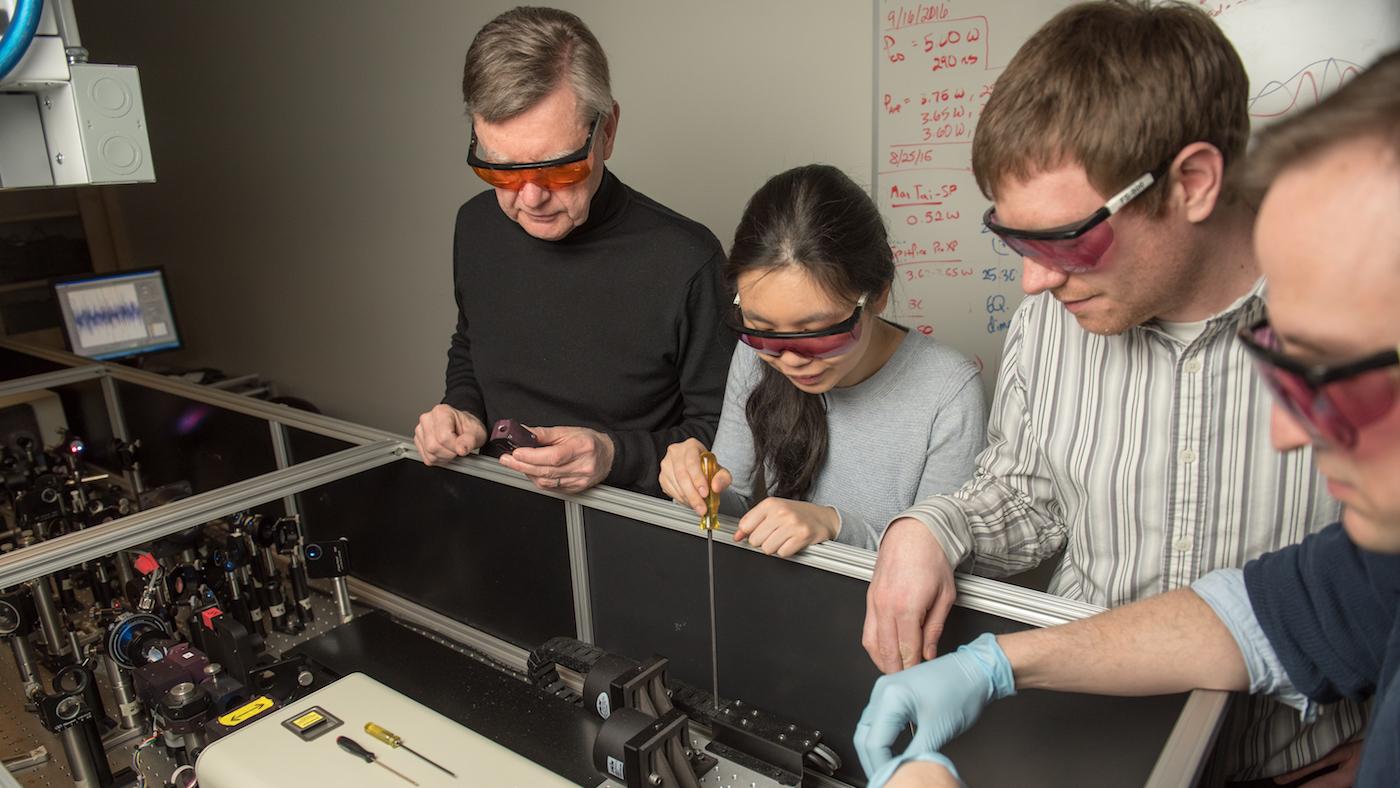Beyond the Silicon Solar Cell: The Exciting Promise of Solar Technologies
Daniel Hautzinger
November 16, 2020

Independent Lens: Jonathan Scott’s Power Trip, about obstacles to accessing renewable energy, airs Monday, November 16 at 10:00 pm and will be available to stream.
To most people, renewable energy from solar power means an array of panels with silicon solar cells generating electricity from sunlight. But that’s just the most common of various brilliant technologies that can harness the sun’s energy for human purposes—and it may not even be the most promising.
At Northwestern University’s Institute for Sustainability and Energy (ISEN), research into solar energy falls into two main categories: solar electricity and solar fuels. Sunlight can be used to produce electricity, as with silicon solar cells, but its energy can also be turned to other means, like creating liquid fuels. “Solar fuels really means using sunlight to drive chemical reactions that will produce fuels, like for instance taking carbon dioxide back into a fuel,” explains Michael Wasielewski, a chemistry professor at Northwestern and the executive director of ISEN and its associated Solar Fuels Institute.
Essentially, solar fuels convert energy from the sun into a storable, usable form of energy such as a liquid fuel—think of it like an artificial form of photosynthesis, which plants use to convert sunlight into sugars and oxygen. Imagine a field of those silicon cell solar panels, but the electricity they produce drives a water electrolyser rather than being sent to a grid. The electrolyser splits water into its constituent oxygen and hydrogen, the latter of which can then be turned into hydrogen fuel. That’s solar fuel in one of its simpler forms—and it uses currently available, common technologies.
The reason no one is rushing to do this with solar arrays is that we don’t have much infrastructure in place to use and distribute hydrogen fuel. “The technology is known, it’s just not widely distributed around the country,” says Wasielewski. “The more shall we say appealing way to go is if you create a liquid that can be used in current vehicle technology. For instance, you can run a car on methanol, although you have to change out gaskets and things like that in the engines. You could use a standard filling station in the same way it’s used today.”
One possibility of solar fuel production would be an integrated system that takes climate change-causing carbon dioxide out of the atmosphere and transforms it into methanol or carbon monoxide, which is often used in the chemical industry. In principle, such a system would mitigate climate change by both removing carbon dioxide from the atmosphere and replacing fossil fuels, which release carbon dioxide when burned.
Solar fuel production need not be limited to a centralized facility with a solar array, Wasielewski says. Eventually, there might be systems that integrate into a single membrane both the mechanism that absorbs sunlight and that which causes the chemical transformation into fuel. “It could act to produce the product that you want directly when you shine light on it,” Wasielewski says. “The idea is you wouldn’t need an enormous plant. You could distribute it in some fashion.”
Distribution would allow for new possibilities in land and water utilization, since there wouldn’t be one massive central plant with acres of solar panels. And it might make it easier to fit solar fuel production into existing infrastructure.
Solar fuels are probably a decade or more out, according to Wasielewski, although he believes that the chemical industry is going to increasingly turn to solar to make commodity chemicals—“the basic building blocks of plastics or pharmaceuticals”—using the same principle. But solar electricity is obviously already here, and ISEN and others are working to improve solar cells—which would also benefit solar fuel production, whenever that comes around.
“We’re trying a relatively new approach to solar cells,” Wasielewski says. “Your normal silicon solar cell actually throws away the entire blue end of the solar spectrum.” ISEN researchers are attempting to harness a process called singlet fission to use that wasted blue light. “In singlet fission, when certain molecules absorb blue light, you end up creating two pairs of charged species in the system for the price of one,” he explains.
The molecules involved in singlet fission are generally simple: a molecule used in red car paint is one effective example. Utilizing singlet fission in a conventional silicon solar cell via, say, a coating on the cell could boost its maximal efficiency by as much as twelve percent. “It’s a little bit like getting something for nothing, because you’re utilizing a part of the solar spectrum that you couldn’t before,” Wasielewski says. “It’s really only been recognized in the last decade that it’s possible to do this. We’re trying to understand this process and making, I think, some significant progress on it.”
ISEN researchers are also working with several materials that could make a more efficient, less expensive, or otherwise improved solar cell. Organic photovoltaics, or OPVs—“think plastic solar cells,” says Wasielewski—are made from cheap, flexible materials that could be applied in a wide variety of places: “in window shades, in clothing. You could put solar everywhere, even in places where you wouldn’t even think about it today,” he says.
The crystalline perovskite provides another promising basis for solar capture. “Once again the advantage is inexpensive, easy to produce,” says Wasielewski, noting that some pioneering work in perovskites was done at Northwestern. While perovskite solar cells have problems, there are possible solutions, including encapsulating the cells to protect them from water and using tin instead of lead to avoid toxicity. “There are challenges, but I think between perovskites, OPVs, and using boosting effects like singlet fission, there are lots and lots of cool things on the horizon with regard to next-generation solar cells,” Wasielewski says.
Having watched solar technologies evolve over the course of his 40-year career, Wasielewski is optimistic about its possibilities. “The sun is there for us and we know how to use it, so it’s just a matter of spending the time and effort, and the politics and economics of implementing all these solar technologies sooner rather than later.”







